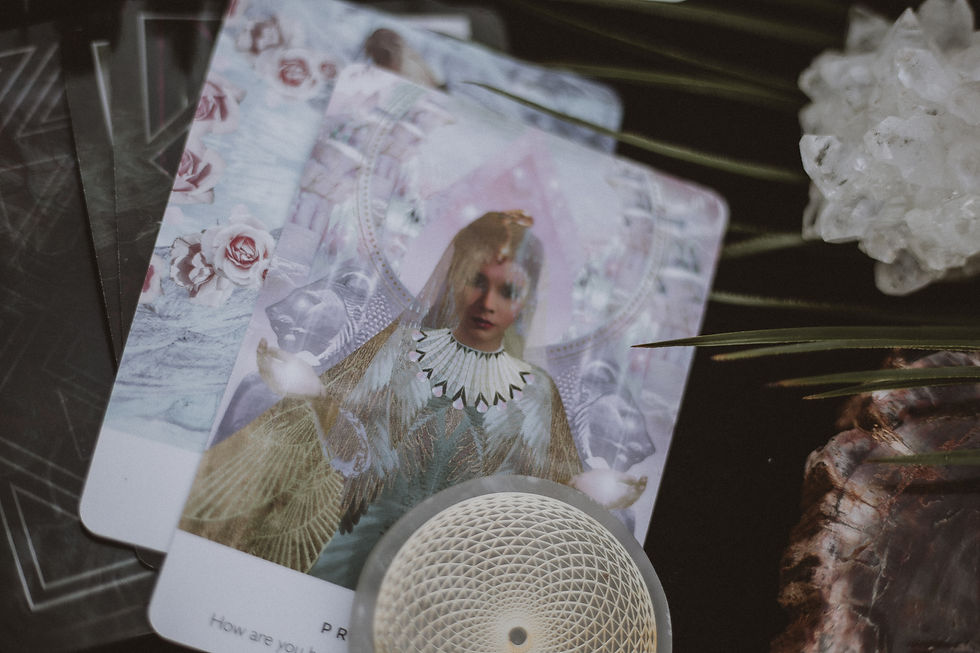The Anima & Animus and Present Day Views
- Laura

- May 6
- 4 min read
The Anima & Animus: Moving Beyond Jung’s Binary View of Inner Balance
What If Masculine and Feminine Aren’t Opposites?
Carl Jung’s theory of the anima (inner feminine) and animus (inner masculine) was groundbreaking in his time. He believed that every person carries both masculine and feminine energy within them, and that psychological growth requires integrating these aspects. But Jung framed these ideas through a binary, gendered lens. He assumed that men possess an inner feminine (anima) and women possess an inner masculine (animus), reflecting early 20th-century views on gender.
Today, we understand that gender is not a strict binary, and neither is energy. Nonbinary, transgender, and gender-fluid individuals don’t fit neatly into Jung’s categories, which means it’s time to rethink his framework.
Does that mean his ideas are irrelevant? No. But they do need an update. Instead of viewing anima and animus as locked to assigned gender, we can approach them as energetic forces that exist in all people, regardless of gender identity. This allows understanding and integrating all aspects of yourself and your ability to feel deeply and act decisively, to be intuitive and structured, to be fluid and grounded.

Rethinking the Anima & Animus: Beyond Gendered Archetypes
What Jung Got Right
Jung’s core idea: that psychological wholeness comes from integrating different aspects of the self still holds true. He recognized that people tend to suppress certain traits, either because of societal conditioning or personal trauma. His anima/animus model was his way of explaining how to reclaim those lost pieces.
For example:
• Someone raised to believe emotions are weak might struggle with emotional depth.
• Someone raised to believe they must always be in control might struggle with surrender and fluidity.
But These imbalances aren’t about gender specifics, they’re about conditioning. And that’s where we move or adjust beyond Jung’s framework.
Where Jung’s Model Falls Short
Jung assumed a fixed binary, that men had an anima and women had an animus. But modern psychology recognizes that gender is more complex. Even cisgender individuals will not always fit Jung’s rigid framework as plenty of men are naturally in touch with emotional depth, and plenty of women have a strong sense of self-direction. Instead of defining these energies as “masculine” or “feminine,” we can look at them as archetypal forces within all of us.

The New Model: Balancing Fluid Archetypal Energies
Rather than dividing qualities into masculine or feminine, let’s break them down into fluid energies that exist in everyone:
• Intuition & Logic – Feeling and thinking, sensing and analyzing.
• Receptivity & Action – The ability to receive and the ability to create movement.
• Structure & Flow – Stability and adaptability, planning and improvisation.
• Depth & Power – Emotional depth and inner strength, vulnerability and resilience.
How This Plays Out in Relationships
Jung argued that people project their anima/animus onto partners by seeking in others what they haven’t developed in themselves. This still happens, but again, it’s not about gender. It’s about externalizing qualities instead of owning them.
For example:
• If you reject emotional depth, you might be drawn to deeply expressive partners but struggle with your own vulnerability.
• If you struggle with direction, you might idolize partners who seem decisive but feel lost without them.
• If you associate strength with control, you might mistake dominance for confidence.
Instead of looking for someone to “complete” you, the real work is integrating these energies within yourself.
“Until you make the unconscious conscious, it will direct your life and you will call it fate.” — Carl Jung

How to Integrate Your Full Self
Rather than developing an anima or animus, cultivating wholeness by integrating the energies you lack.
1. Get Comfortable with Both Emotion and Action
• If you struggle with emotions, practice naming and expressing them.
• If you struggle with direction, practice making decisions without second-guessing.
2. Trust Both Intuition and Logic
• Learn to listen to your gut without abandoning rational thought.
• If you’re overly logical, explore intuitive practices like meditation or dream work.
3. Balance Structure and Flow
• If you’re overly rigid, try surrendering to the unknown.
• If you lack structure, experiment with routines and goal-setting.
4. Recognize Your Projections
• Notice what you idealize or resent in others.
• Ask yourself: Is this something I need to develop in myself?
Jung’s ideas laid the groundwork for understanding inner balance, but they were shaped by a time when gender was seen in strict binary terms. The core truth remains—we all carry different energies within us, and psychological growth requires integrating what we’ve been conditioned to reject.
Instead of seeing these energies as masculine or feminine, we can see them as universal forces that exist beyond gender. Everyone—regardless of gender identity—has the capacity for:
• Intuition and logic
• Receptivity and action
• Structure and flow
• Depth and power
When you stop forcing yourself into categories and instead focus on becoming whole, you move beyond labels and into true self-integration.





Comments